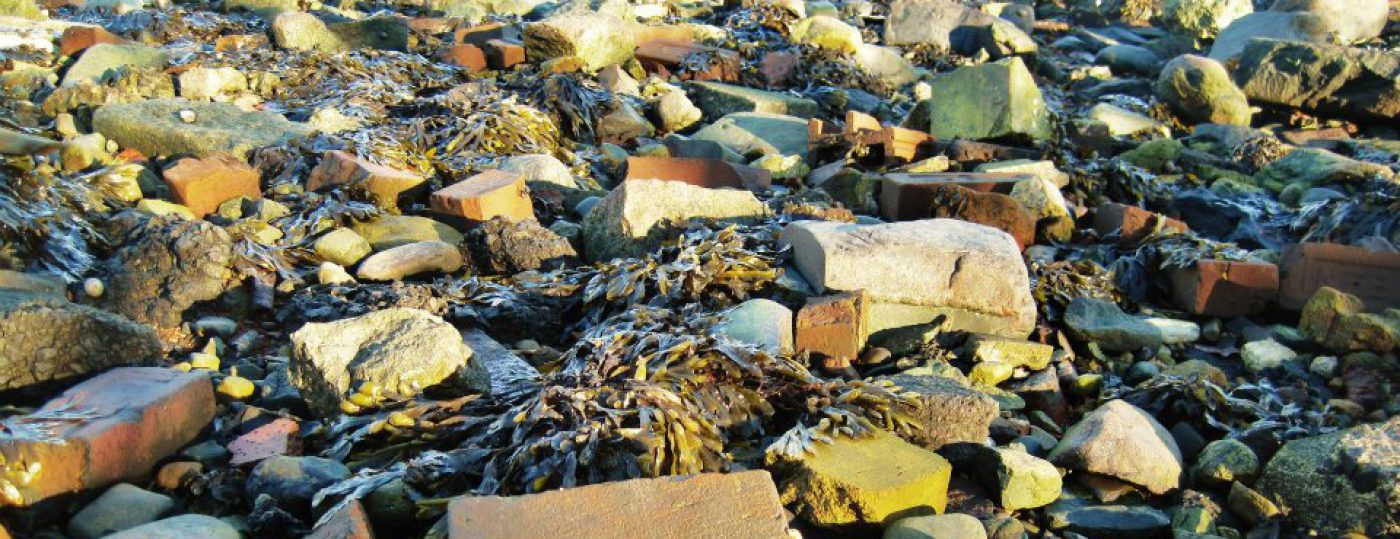From Brick and Clay Record, Volumes 32-33, 1910:
THE TERRY YARDS.
Terry Bros. Co. is represented in the brick market by two well-known brands—”Terry” and “Terry Bros.” The latter is made from blue clay and the former from mixed blue and yellow. The yards are located at East Kingston and a point further up stream known as “Steep Rocks,” and the property includes an inexhaustible supply of clay. The annual capacity of the two plants is about 26,900,000 brick. Both circular pits and sod pits are used in the process of manufacture on these yards. Terry Bros. Co. was among the first on the river to use coal for fuel, this innovation having been introduced in 1884.
The Terry yards were founded in 1850 and have always produced a brick of a particularly rich maroon hue which has been a leader in its line for generations. Here is an instance where modern business methods have entered the brickyard, everything being done by system. The thoroughness of this is illustrated in the fact that every morning when the laborers take their tools, they are charged with them until they return them cleaned and in good order at night when they are credited with them and the account for the day charged off. This idea is carried out throughout the whole plant and accounts, the firm thinks, for the fine finish and high calibre of their output.

From: Clays of New York: Their Properties and Uses by Heinrich Ries (1900)
East Kingston, Ulster со. There are eight brick manufacturing firms at this locality, viz, Streeter & Hendricks, D. S. Manchester, Brigham Bros., C. A. Schultz, A. S. Staples, K. Maine & Co., Terry Bros, and W. Hutton. They all obtain their clay from the terrace escarpment which extends from Glasco to Rondout. (For thickness of clay see table.) At Streeter & Hendricks’s yard the clay lies some 300 yards from the river. They obtain their tempering sand from Wilbur. Manchester’s bank is similar. At Brigham Bros.’ yard the clay is yellow, being weathered through to its.base. It has a thickness of 10 feet and rests on an uneven ridge of shale. On account of its toughness it is worked by undermining, as is the case with other yards along here where clay is being dug. C. A. Schultz has an exposure of clay 80 feet thick, overlain in spots by sand that can be used for tempering. Next on the south is A. S. Staples’s yard. The bank has been excavated to a lower level than the preceding one. The clay is underlain by hardpan. R. Maine & Co. have five acres of clay land. The terrace here is quite narrow. At Terry Bros.’ yard the clay, which is mostly blue, has been excavated sufficiently to expose the limestone against which the terrace lies. At Hutton’s yard the blue clay is exposed from 8 feet above mean tide, to 110 feet above it; overlying this is 10 feet of yellow clay and then 15 feet of sand. It will be seen from the limits quoted above and in the table, that the thickness of the clay between Glasco and Rondout varies considerably, amounting to 120 feet in places, while in others it is not over 15 or 20 feet. This is due to the great irregularity of the underlying rock surface.

